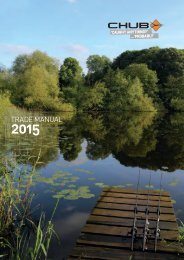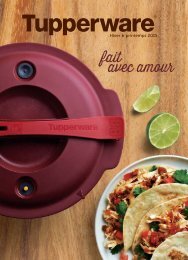CHAMPAGNE
This combination of weather influences makes for constant, moderate precipitation – a near-ideal pattern of rainfall that provides the vines with just enough water to produce quality fruit. Mean annual rainfall for the Champagne region as a whole is close to 700mm, ranging from 600mm to 900mm depending on the area.
This combination of weather influences makes for constant, moderate
precipitation – a near-ideal pattern of rainfall that provides the vines with just
enough water to produce quality fruit. Mean annual rainfall for the Champagne
region as a whole is close to 700mm, ranging from 600mm to 900mm depending
on the area.
Create successful ePaper yourself
Turn your PDF publications into a flip-book with our unique Google optimized e-Paper software.
• The registration and code number issued by the CIVC, preceded by two initials that indicate the category of producer:<br />
NM for Négociant Manipulant, RM for Récoltant Manipulant, CM for Coopérative de Manipulation, RC for Récoltant<br />
Coopérateur, SR for Société de Récoltants, ND for Négociant Distributeur, MA for Marque d’Acheteur.<br />
• Batch code (sometimes displayed directly on the bottle).<br />
• Allergen content (eg sulphur dioxide, sulphites, etc).<br />
• The dangers of even small amounts of alcohol to the unborn child, or the symbol (required by certain countries<br />
only)<br />
• The Green Dot symbol indicating that the producer is a member of the packaging recovery scheme.<br />
• Where appropriate, the vintage and specific details relating to the type of cuvée (whether a blanc de blancs, rosé,<br />
blanc de noirs, etc).<br />
• Optional information (the varietals used, date of disgorgement, sensory characteristics, suggested food-and-wine<br />
pairings, etc.)<br />
Champagne wines are built to age, forever evolving from the moment of first fermentation to final corking and long<br />
beyond that point.<br />
The great reserve wines are aged on their lees for up to a decade, stored in oak vats that<br />
exclude oxygen, at constant low temperatures that contribute to the wine’s longevity.<br />
Bottled wines are traditionally aged in one of two ways:<br />
Aging<br />
- on lees, in bottles sealed with a tirage stopper (whether natural cork or crown cap)<br />
and stored in the producer’s cellars. Such bottles are disgorged a few months before<br />
distribution.<br />
- after disgorgement, dosage and final corking, either in the producer’s cellars or after<br />
distribution.<br />
The aromatic profile of a mature wine that was disgorged early in its life is quite distinct<br />
from that of a late-disgorged wine. The type of maturation therefore depends on the style<br />
of wine that the winemaker has in mind.<br />
Labelling<br />
37

















